Related Research Articles

Christ's College is a constituent college of the University of Cambridge. The college includes the Master, the Fellows of the College, and about 450 undergraduate and 250 graduate students. The college was founded by William Byngham in 1437 as God's House. In 1505, the college was granted a new royal charter, was given a substantial endowment by Lady Margaret Beaufort, and changed its name to Christ's College, becoming the twelfth of the Cambridge colleges to be founded in its current form. Alumni of the college include some of Cambridge University's most famous members, including Charles Darwin and John Milton.
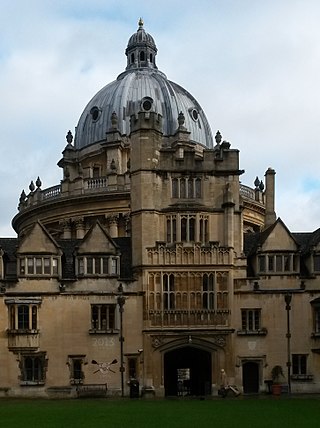
Brasenose College (BNC) is one of the constituent colleges of the University of Oxford in the United Kingdom. It began as Brasenose Hall in the 13th century, before being founded as a college in 1509. The library and chapel were added in the mid-17th century and the new quadrangle in the late 19th and early 20th centuries.
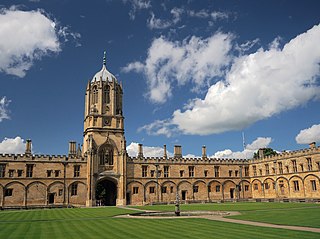
Christ Church is a constituent college of the University of Oxford in England. Founded in 1546 by King Henry VIII, the college is uniquely a joint foundation of the university and the cathedral of the Oxford diocese, Christ Church Cathedral, which also serves as the college chapel and whose dean is ex officio the college head.

Lady Margaret Hall (LMH) is one of the constituent colleges of the University of Oxford in England, located on a bank of the River Cherwell at Norham Gardens in north Oxford and adjacent to the University Parks. The college is more formally known under its current royal charter as "The Principal and Fellows of the College of the Lady Margaret in the University of Oxford".

Lincoln College is one of the constituent colleges of the University of Oxford, situated on Turl Street in central Oxford. Lincoln was founded in 1427 by Richard Fleming, the then bishop of Lincoln.
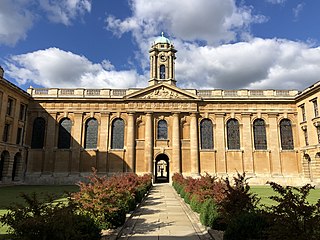
The Queen's College is a constituent college of the University of Oxford, England. The college was founded in 1341 by Robert de Eglesfield in honour of Philippa of Hainault, queen of England. It is distinguished by its predominantly neoclassical architecture, primarily dating from the 18th century.

St Anne's College is a constituent college of the University of Oxford in England. It was founded in 1879 and gained full college status in 1959. Originally a women's college, it has admitted men since 1979. It has some 450 undergraduate and 200 graduate students and retains an original aim of allowing women of any financial background to study at Oxford. It still has a student base with a higher than average proportion of female students. The college stands between Woodstock and Banbury roads, next to the University Parks. In April 2017, Helen King, a retired Metropolitan Police Assistant Commissioner, took over as Principal from Tim Gardam. Former members include Danny Alexander, Edwina Currie, Ruth Deech, Helen Fielding, William MacAskill, Amanda Pritchard, Simon Rattle, Tina Brown, Mr Hudson and Victor Ubogu.
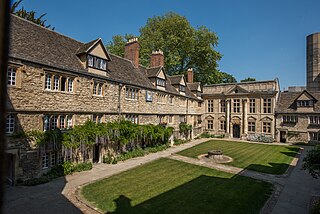
St Edmund Hall is a constituent college of the University of Oxford. The college claims to be "the oldest surviving academic society to house and educate undergraduates in any university" and was the last surviving medieval academic hall at the university.
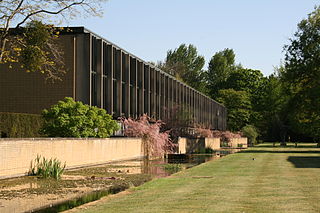
St Catherine's College is one of the constituent colleges of the University of Oxford. In 1974, it was also one of the first men's colleges to admit women. It has 528 undergraduate students, 385 graduate students and 37 visiting students as of December 2020, making it one of the largest colleges in either Oxford or Cambridge.

St Hugh's College is one of the constituent colleges of the University of Oxford. It is located on a 14.5-acre (5.9-hectare) site on St Margaret's Road, to the north of the city centre. It was founded in 1886 by Elizabeth Wordsworth as a women's college, and accepted its first male students in its centenary year in 1986. It enjoys a reputation as one of the most attractive colleges because of its extensive gardens.

Selwyn College, Cambridge is a constituent college of the University of Cambridge. The college was founded in 1882 by the Selwyn Memorial Committee in memory of George Augustus Selwyn (1809–1878), the first Bishop of New Zealand (1841–1868), and subsequently Bishop of Lichfield (1868–1878). Its main buildings consist of three courts built of stone and brick. There are several secondary buildings, including adjacent townhouses and lodges serving as student hostels on Grange Road, West Road and Sidgwick Avenue. The college has some 60 fellows and 110 non-academic staff.

St Aidan's College is a college of the University of Durham in England. It had its origins in 1895 as the association of women home students, formalised in 1947 as St Aidan's Society. In 1961, it became a full college of the university, and in 1964 moved to new modernist buildings on Elvet Hill designed by Sir Basil Spence.

Van Mildert College is a college of Durham University in England. Founded in 1965, it takes its name from William Van Mildert, Prince-Bishop of Durham from 1826 to 1836 and a leading figure in the University's 1832 foundation. Originally an all-male college, it became co-educational in 1972 with the admission of female undergraduates.

The Bullingdon Club is a private all-male dining club for Oxford University students. It is known for its wealthy members, grand banquets, and bad behaviour, including vandalism of restaurants and students' rooms. The club selects its members not only on the grounds of wealth and willingness to participate but also by means of education.

Westcott House is an Anglican theological college based on Jesus Lane in the centre of the university city of Cambridge in the United Kingdom. Its main activity is training people for ordained ministry in the Church of England and other Anglican churches. Westcott House is a founding member of the Cambridge Theological Federation. The college is considered by many to be Liberal Catholic in its tradition, but it accepts ordinands from a range of traditions in the Church of England.
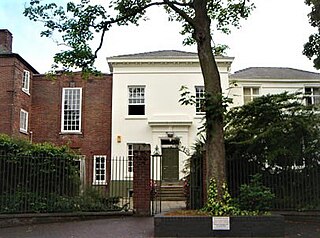
St Anselm Hall, known colloquially as Slems, is a traditional University of Manchester hall of residence situated in Victoria Park.

A common room is a group into which students are organised in some universities, particularly in the United Kingdom, normally in a subdivision of the university such as a college or hall of residence, in addition to an institution-wide students' union. They represent their members within the hall or college, operate certain services within these institutions such as laundry or recreation, and provide opportunities for socialising. There are variations based on institutional tradition and needs, but classically the following common rooms will exist:
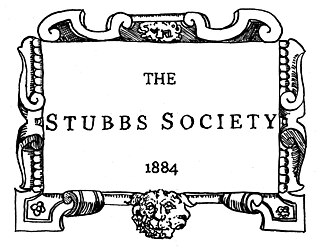
The Stubbs Society for Foreign Affairs and Defence, commonly referred to simply as Stubbs Society, is the University of Oxford's oldest officially affiliated paper-reading and debating society. It is the university's forum for scholarship in international history, grand strategy and foreign affairs.

The Night Climbers of Oxford is a secret society, dedicated to nocturnally scaling college and town buildings in Oxford, England. The society is noted for its political activism, controversial acts, feats of climbing and parkour, as well as urban exploration. The society was likely inspired by their Cambridge counterparts, The Night Climbers of Cambridge. Activities conducted by the society are forbidden by the University authorities, meaning that acts are completed under the cover of darkness, to avoid detection.
References
- ↑ Lyall, Alfred. The Life of the Marquis of Dufferin and Ava. 1905
- ↑ "Hugh was also a member of the more secretive 'P' (the Pythic) Club, for which both students and Students were eligible, by invitation only." Hugh Trevor Roper: The Biography, Adam Sisman (WN, 2009), p. 46
- ↑ Christ Church Matters, p. 3, accessed 2 March 2015 (12.27)
- 1 2 Humphries, Will. "Oxford bans secretive dining club for failing diversity targets". The Times . ISSN 0140-0460 . Retrieved 15 April 2020.
- 1 2 3 "Christ Church Senior Censor Brian Young runs 'exclusive' dining society". The Oxford Student. 13 June 2019. Retrieved 15 April 2020.
- 1 2 3 4 5 6 T, Arya; on (2 February 2020). "Christ Church bans exclusive 'P Club' from college". The Oxford Student. Retrieved 15 April 2020.
- 1 2 Atkinson, William (4 February 2020). "Christ Church drinking society condemned by students". Cherwell. Retrieved 15 April 2020.
- ↑ Sampson, Annabel (4 February 2020). "Why Oxford has banned a secret dining club". Tatler. Retrieved 15 April 2020.